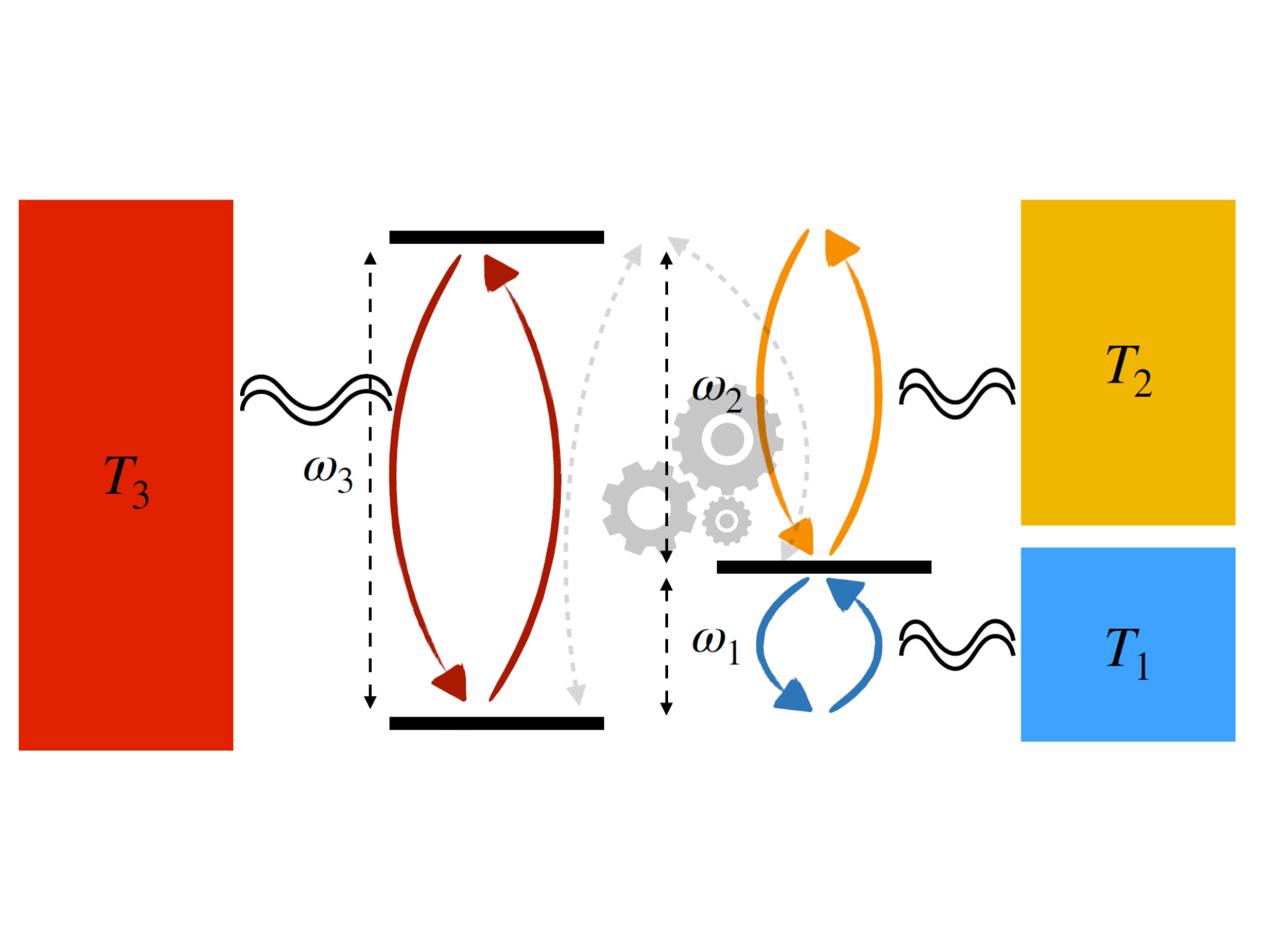Quantum thermodynamics and statistical physics

Illustration of a 3-level system coupled to three thermal baths at different temperatures, and externally driven by a time-dependent Hamiltonian. Image extrapolated from the supplemental material of the article S. Gherardini, A. Belenchia, M. Paternostro, and A. Trombettoni, End-point measurement approach to assess quantum coherence in energy fluctuations, Phys. Rev. A 104, L050203 (2021).

Image extrapolated from the back cover of the article I. Mastroserio, S. Gherardini, C. Lovecchio et al., Experimental realization of optimal time-reversal on an atom chip for quantum undo operations, Adv. Quantum Technol. 5 (12), 2200057 (2022). The image, created by I. Mastroserio, depicts the way optimal control pulses can be exploited to successfully perform time-reversed evolutions in driven open quantum systems. In gate-based platforms, the time-reversal of the last executed operation could be associated to the undo command of a quantum computer.
Description
In this research activity we study the laws of thermodynamics in many-body or single particle quantum systems, both closed (i.e., coherently controlled for example by means of laser light) and open (in interaction with the external environment). In particular, the goal is to characterize the probability distributions of work, heat and entropy according to the principles of stochastic thermodynamics.
One of the objectives is the verification of the so-called fluctuation theorems that link thermodynamic quantities at equilibrium, which are difficult to access, with others in non-equilibrium regimes that instead can be measured experimentally. In this context, we provide the characterization of the irreversibility of open systems dynamics from the computation of the stochastic entropy production. Irreversibility is a concept that concerns many disciplines of physics, especially statistical physics and complex systems, since it explains and allows to evaluate the causes of heat dissipation due to the breaking of the time-reversal symmetry. This leads to the description of the gap between the past and the future, whose paradox in our macroscopic reality is called the arrow of time.
Furthermore, we want to determine the physical-mathematical conditions for the inclusion of quantum coherence and quantum correlations in the probability distributions of thermodynamic quantities. To this end, the end-point measurement (EPM) scheme and the quasi-probability approach are the most investigated. As a possible application, the resulting quantum distributions can give rise to energy processes for work extraction, beyond fundamental classical limits.
These thermodynamics and statistical physics research activities are finding use in quantum computing and quantum sensing, which are now recognized as two pillars of current quantum technologies . It is also worth considering the natural application to the fields of renewable energy and energy sustainability, for which it has been theorized that quantum coherence could help to go beyond the upper limit of photovoltaic efficiency.
Finally, we aim to test theoretical results in laboratory experiments. In this regard, many predictions have already been verified by the research group Diamond quantum nano-engineering, within the CNR-INO, in experimental platforms based on single spins and spin systems in diamond.
INO Staff
Fabbri NicoleGherardini Stefano (Contact Person)

